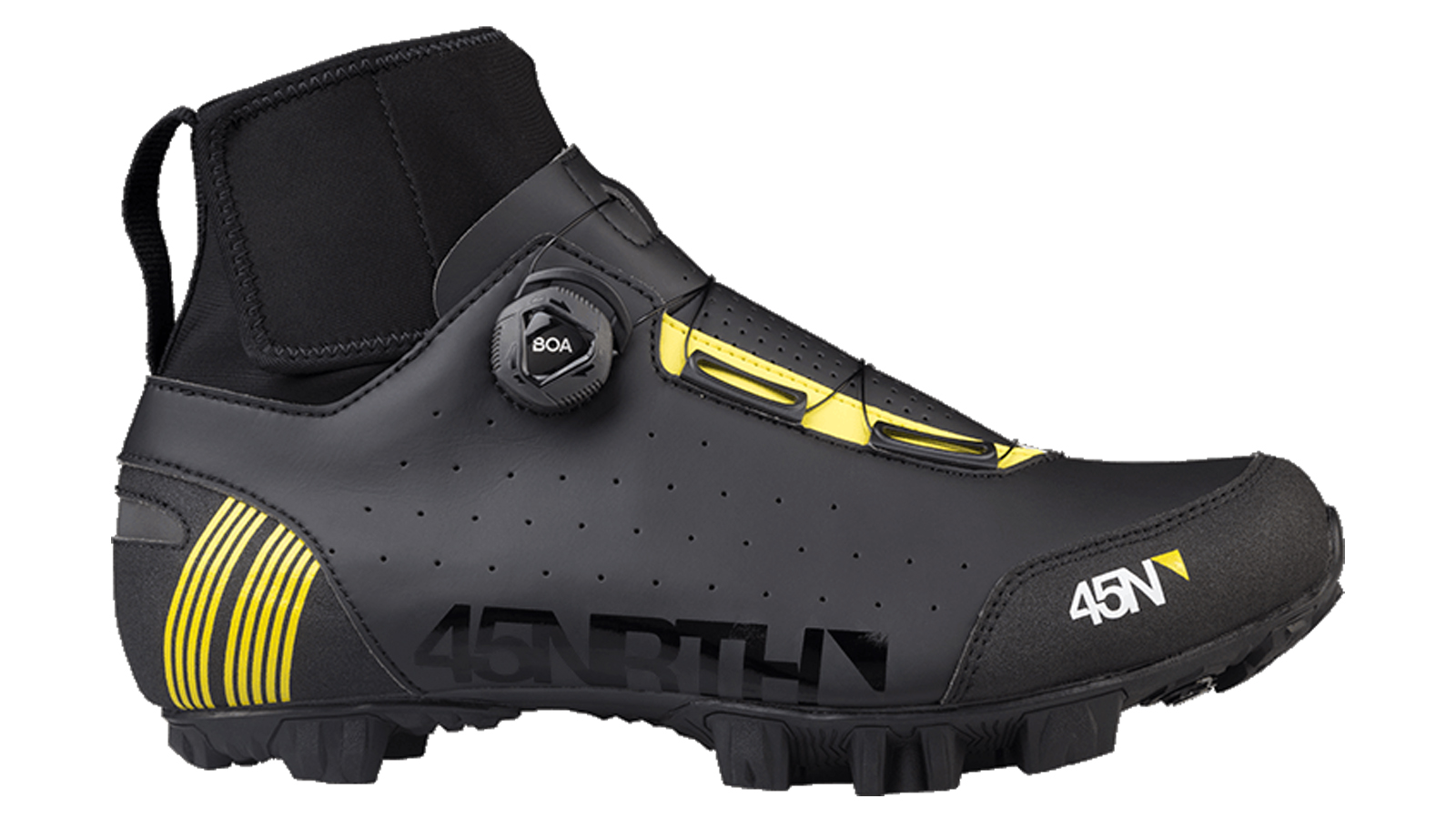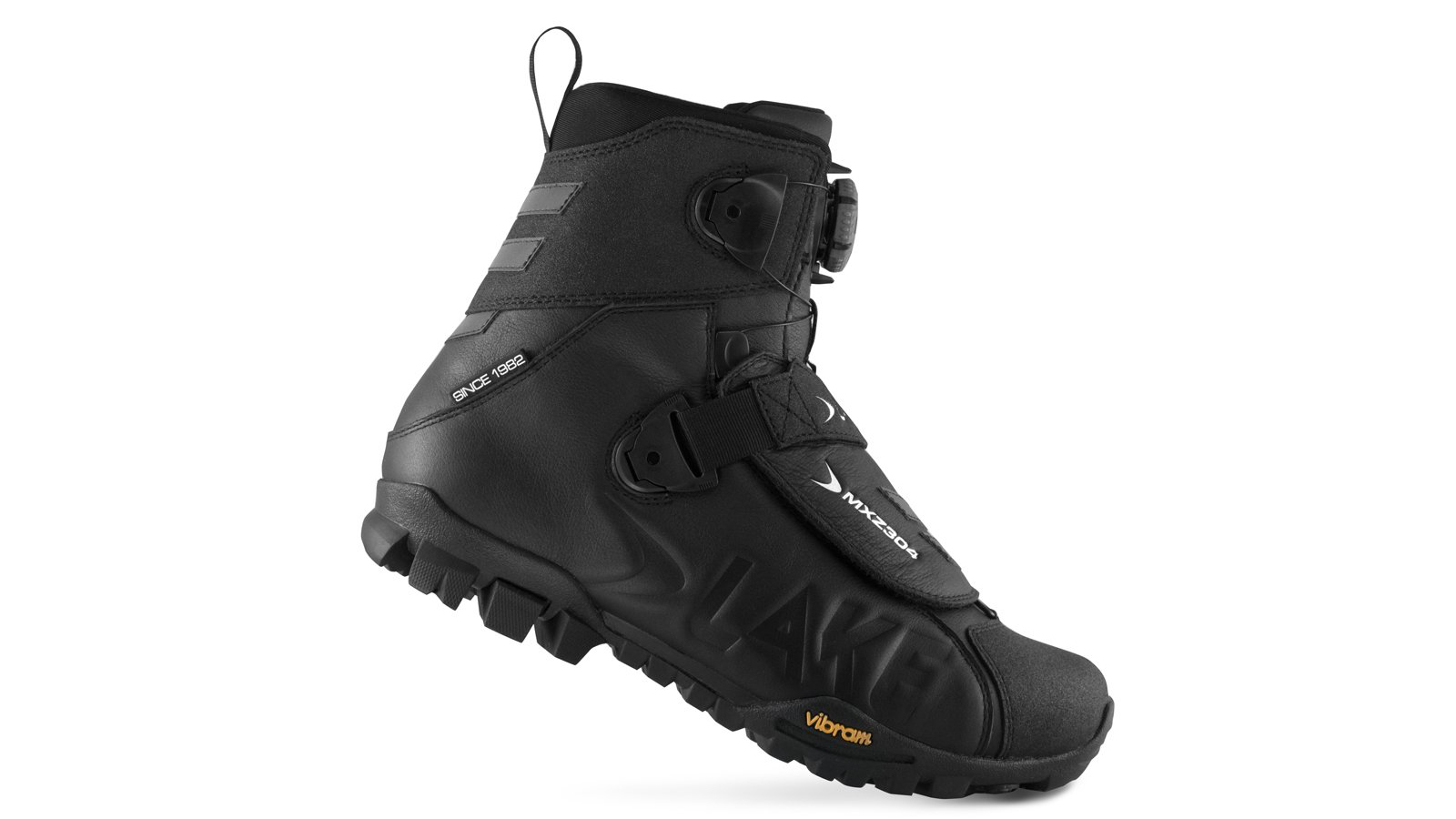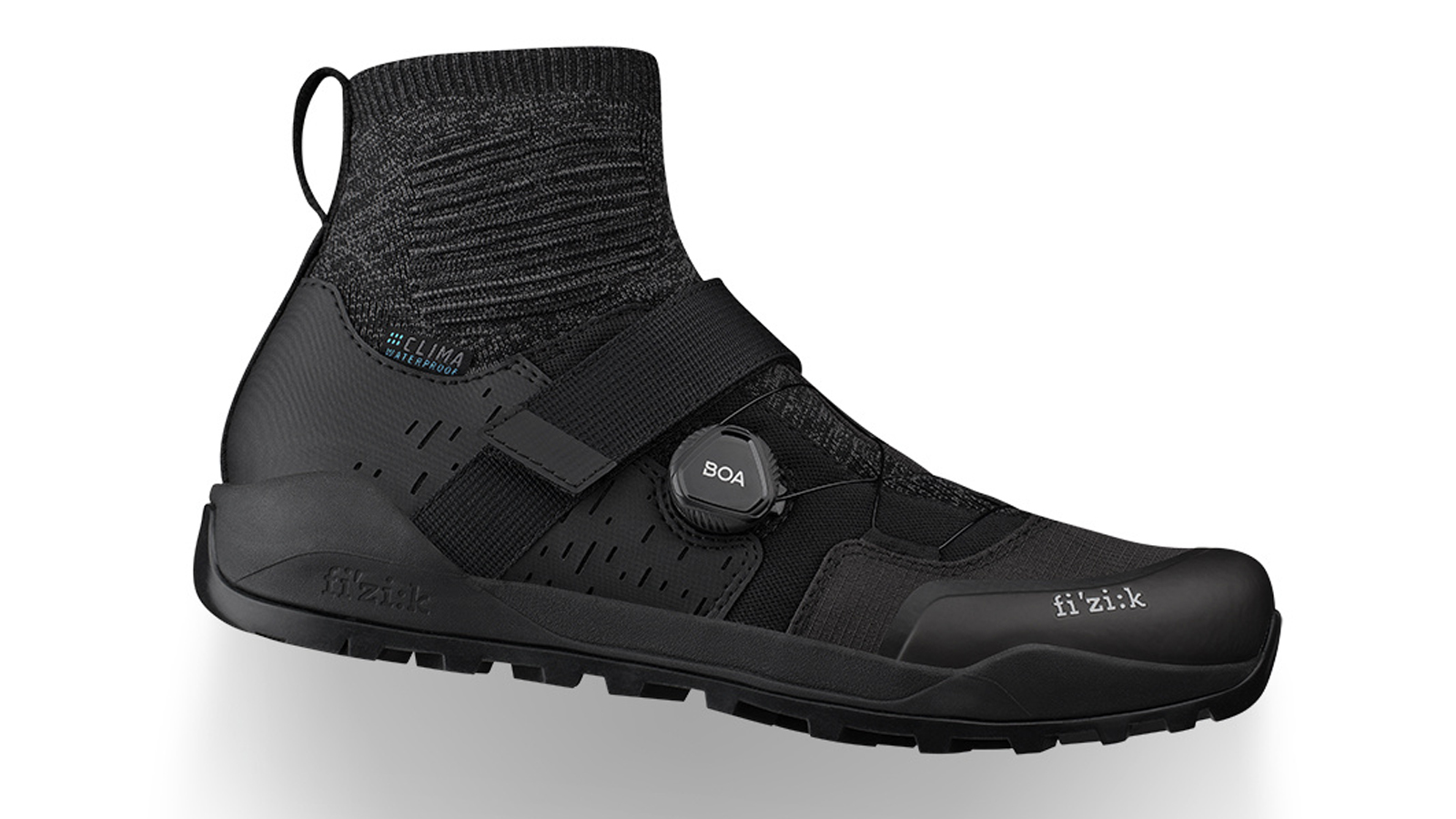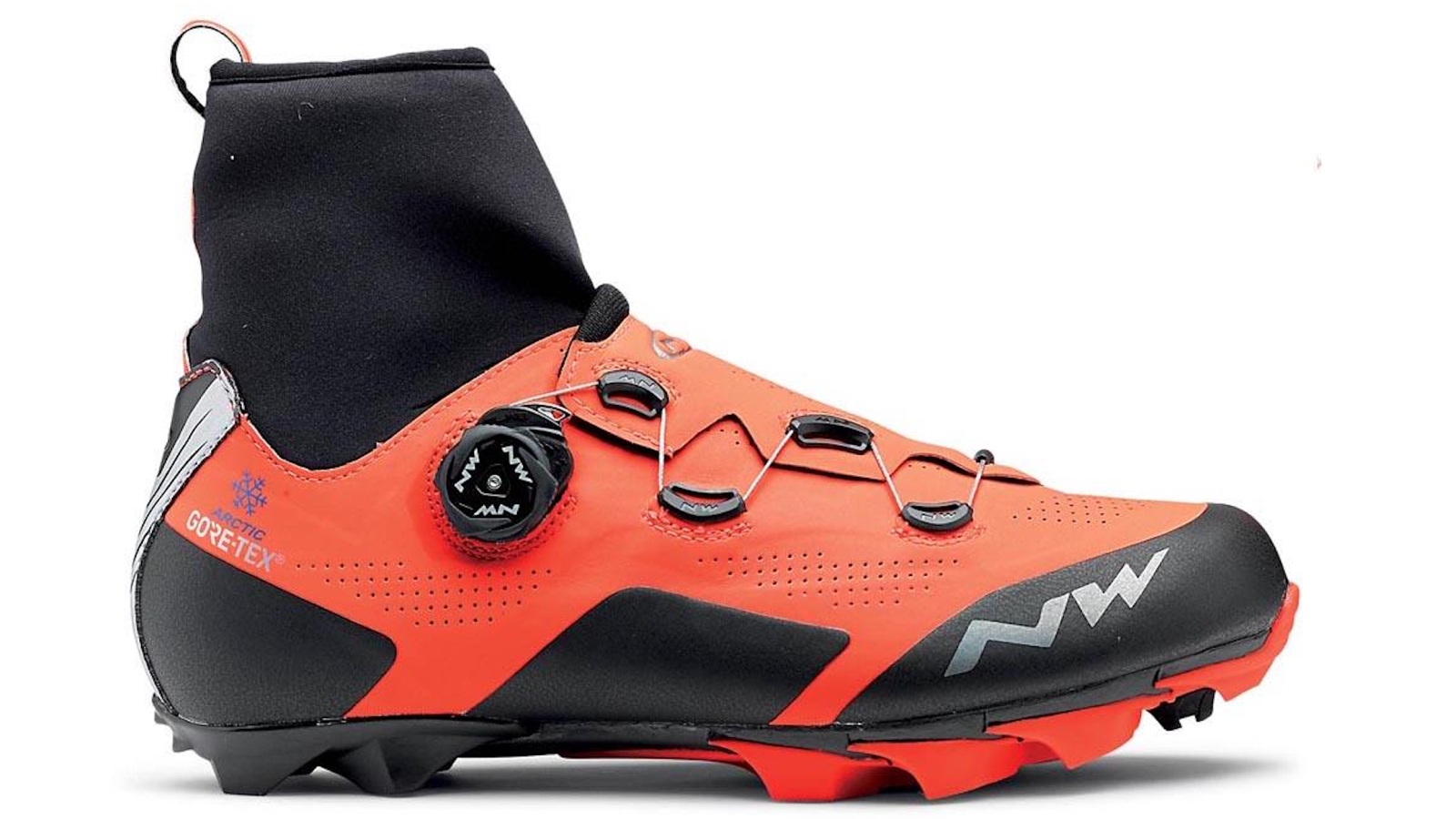Best winter MTB boots 2025 – we test top weatherproof mountain bike boots for winter riding
Proper winter MTB boots can help prevent the inevitable misery of mountain biking with frozen feet. Here’s our pick of the best footwear for when temperatures head south

During the winter months, it’s a constant fight to keep your feet warm. The best winter MTB boots and shoes keep mud, rain, snow and sleet from freezing your toes. Luckily, Bike Perfect has plenty of experience riding in rugged British conditions, testing the best winter MTB boots against the worst the weather can throw at you.
While winter riding isn't for everybody, lots of riders just can't stand being trapped inside all winter long – sometimes, even the best MTB smart trainers are no substitute. Good winter footwear is essential for comfortable and fun rides when the conditions get particularly nasty. Pair the best winter MTB boots with the best MTB jackets and best waterproof MTB trousers, and you'll be fully kitted for winter season.
Check out our list of the best winter MTB boots, and scroll to the bottom to learn about how to choose a new pair.
Best winter MTB boots
Why trust BikePerfect

Specifications
Reasons to buy
Reasons to avoid
The Shimano MW7 is an SPD-compatible winter boot ideal for cross-country shredders.
To keep the water out and heat in, the boot features a Gore-Tex membrane with a fleecy liner and gusseted tongue. Underneath the cuff is a BOA L6 Dial that lets you increase tension quickly with one hand, but you can also release the tension by just pulling up the dial. In fact, one of the best things about this winter boot is that it’s dead easy to get in and out of. Once you’ve closed up shop, the MW7 is snug but at the end of a cold wet ride you simply throw back the flap, yank on the dial and put your feet up.
While the Shimano MW7 could do with a set of spikes, the minimalist sole has good grip, impressive mud shedding and just the right amount of flex for walking and pedaling comfort. This versatile boot is also reasonably lightweight, doesn’t feel restrictive and comes fully recommended.
Check out our full review of the Shimano MW7 shoes.

Specifications
Reasons to buy
Reasons to avoid
Designed for flat pedal users, the Five Ten Trailcross Gore-Tex is based on the company’s regular Trailcross XT high top, but with an extended neoprene cuff to keep the heat in and a fully waterproof Gore-Tex membrane to keep the wet out.
It uses an identical sole and the same last as the Trailcross XT, but the cuff extends a bit higher on the ankle. This is more supportive and provides greater protection from the elements, though we found the tighter fit made it harder to get a foot in.
As with all Five Ten flat shoes, pedal traction is amazing. Not only is the Stealth rubber soft, it’s also low rebound, so your feet don’t get bounced around when rattling down a lumpy descent. Few flat shoes we’ve tested feel this locked in and the only reason your feet are going to come off the pedals is if you want them to.
It's not quite as waterproof or as toastie warm as brands such as Lake and 45Nrth but Five Ten Trailcross Gore-Tex is lighter, has a better ride feel and a ton more grip. You’ll need to try before you buy on the sizing, but this is a great value winter welly for changeable conditions.
Find out more in our full review of the Five Ten Trailcross Gore-Tex MTB shoes.

Specifications
Reasons to buy
Reasons to avoid
Shimano have invested in a newly reformulated Ultread rubber compound for the outsoles of its latest trail/enduro shoe lines. The Ultread rubber for the flat pedal specific GF800s has been specifically designed for maximum grip in cold weather and tester, Rich Owen, has been impressed by their secure pedal grip in filthy conditions.
While stitched and glued upper panels are designed to keep the worst of the weather out, there are ventilation holes in the toe section and outer face of each shoe. A waterproof flap partially covers the 'lace' section, but rather than laces the GF800s have been specced with a wired BOA closure system – which Shimano says was selected for easier operation with gloved hands and Rich agreed was a good choice during his testing.
A Gore-Tex 'sock' lines the interior of the shoes which is designed to help keep the elements at bay as well as giving maximum foot comfort. There's insulation between the sock liner and the outers which should help keep things warm when temperatures start to bite. Water can enter the boots but it comes down the ankle rather than through the uppers.
Rich summed up the boots as, "Comfortable, grippy and protective, the GF800 GTXs keep the your feet drier than any other flat pedal MTB footwear I've used and have become my go-to riding shoes for foul or winter weather."
For more info, see our full Shimano GF800 GTX review.

Specifications
Reasons to buy
Reasons to avoid
The Blaze is Giro's dedicated winter mountain biking shoe rated for temperatures down to 14°F/-12°C. The core of the shoe is a moisture-wicking mountain bike shoe, and that is protected by a Primaloft synthetic sheath featuring 10,000 W/P plus 10,000 GM2 wind and waterproof ratings. The outer sheath gives the shoe an aesthetic similar to a standard shoe with a shoe-covering over it, but it's all integrated together.
A high-loft fleece interior plus synthetic insulation keep your toes warm during bitterly cold winter rides. There is reflective detailing on the heel and side panels, and the outsole features "Ice Grip" technology.
The look of this shoe definitely gives off more cross-country or gravel vibes so gravity riders may prefer to look elsewhere.
Want to know more? Read our full review of the Giro Blaze boots.

45NRTH Ragnarok
Specifications
Reasons to buy
Reasons to avoid
45NRTH is a specialist winter biking kit company based in the often brutally cold city of Minneapolis, Minnesota, so by its standards, the Ragnarok is a lightweight performance boot for milder months. For most of the world though, these are a great boot for riding all year without losing out much on propulsion or trail feel.
When we say ‘performance’, they’re not race-shoe-stiff, but are rigid enough that you can still get a stomp on up climbs without them drooping under the load. There’s plenty of space around the cleat holes to stop clogging, although the deep tread can make getting in and out awkward on platform-style pedals. The tread rubber apparently even has glass fiber shards electrostatically aligned to provide extra micro grip on treacherous surfaces.
There are downloadable templates for accurate sizing and, while the heels are snug, the toes are oversized to give warming wiggle room. The 45NRTH Ragnaroks are cut well enough for the single BOA dial to give a supportive, secure fit that makes the most of the boots' sole stiffness and relatively low weight.
The perforated lower boot is also backed up with a breathable membrane and light insulation for core warmth. There’s a low-rise wraparound neoprene collar and, while 45NRTH doesn’t claim the boot will keep you dry in epic storms (no boot actually will), the Ragnaroks retain warmth really well when damp and they dry quickly. That makes them really well suited to riders who are regularly out in the wet, and who’ll get more value from the relatively steep price.

Lake MXZ 304
Specifications
Reasons to buy
Reasons to avoid
Lake Cycling was one of the first brands to produce proper winter-focussed mountain bike footwear and the 304 is part of a long line of high-comfort, high-tech boots.
To ensure easy blood flow, the 304s use a specific winter fit with increased volume and there’s a wide fit version too, although Lake still advises sizing up with winter socks. Additional 200g Thinsulate lining in the toes and along the lower side combines with an Outlast liner that’s designed to regulate temperature. Your feet sit on a fleece, bubble wrap and reflective silver layer ‘Thermosol’ sandwich insole, while a chunky Vibram sole makes for no-slip walking when you can’t pedal any further.
Up top, there's a full wrap rubber toe bumper to protect the premium, super supple Pittards WR100 water-resistant leather upper. There is a flap and a Velcro stabilizing strap over the lower part of the Boa-laced boot which uses an oversized dial for easy gripping with fat-fingered winter gloves. The thick, tall collar completes awesome weather protection but the stiff feel can be intrusive when pedaling, especially when the shoes are new. The leather needs looking after carefully and all the tech makes them super expensive. They feel fantastic though, with excellent warmth and minimal sweating making them great for epic days out.
If the 304s look overkill or too tall, the MX145 and MX180 add lighter weight and armored enduro options to Lake’s comprehensive winter boot arsenal. The MXZ400 offers even more protection for extremely cold conditions.

Fizik Terra Clima X2
Specifications
Reasons to buy
Reasons to avoid
Italian brand Fizik always has a distinctive aesthetic and its new Clima X2 wet weather boot is a prime example.
While most brands hide their waterproof liner under a solid outer skin, Fizik mates it with a woven ripstop ‘sock’ which forms the top part of the upper and the stretchy ankle sock. This is then anchored to the sole with a velcro wrap strap and a short section of BOA-tightened lacing over the midfoot. Toe and heel are then protected with big PU-laminated bumpers while a Vibram Megagrip rubber sole gives excellent grip off the bike. The cleat slots are also extended to allow the more rearward pedal position that gravity riders prefer.
A stiffness rating of only 3 from the nylon reinforced base means they’re pliable enough for extended walking and excellent trail feedback. The cleat slots are also extended to allow the more rearward pedal position that gravity riders prefer. They’re noticeably soft and twisty when sprinting unless you use a big platform pedal, so unlikely to be the first choice for gravel/XC use. The stripped-back design means they’re 20 percent lighter than most of the competition and they dry fast too, making them great for more Enduro-style fall/spring/whenever it’s wet riding.
If you want a properly insulated boot from Fizik, the more conventional Terra Arctica X2 uses the same sole unit with a super breathable eVent membrane backed up by a fleece liner and insoles. A more solid upper means there’s just one BOA dial sorting out the snug security, too.

Northwave Raptor Arctic GTX
Specifications
Reasons to buy
Reasons to avoid
Northwave does a whole range of winter boots and shoes – from the super warm Himalaya to the insulated Raptor TH Thermal race shoe – but we reckon the Raptor family are the best all-rounders.
The brand certainly isn't messing about with compromised power delivery, basing these boots on a triple-density carbon-reinforced sole with a stiffness rating of 12. While there’s no flex for walking, the sole does get toe studs and minimalist tread for short-run sections during winter races or CX sessions.
The sole is backed up with a really rigid heel cup and a side-mounted dial-adjusted lacing system so you can really tighten them without pressure hot spots. The dial also gets a side-latch release for easy escape with fat winter gloves.
While it doesn't look bulky, there is extra insulation and thermal protection over the toe box. The X-Frame upper uses Gore-Tex’s waterproof and windproof Duratherm membrane for efficient climate defiance, and rather than a wraparound design that can leak, the tall Clima Flex collar uses a neoprene sock with a Gore-Tex ‘Rattler’ membrane for a snug but mobile fit.
A four-layer, aluminum-backed and fleece-faced insole adds extra insulation, and considering the sleekness of their looks and the low weight, these are surprisingly warm boots. The rubberizing does reduce their breathability though, so they can get damp inside if you’re a heavy sweater, and the rigid sole also makes them more suitable for racers. If you don’t need extra insulation, the standard Raptor GTX has similar uppers but without extra insulation and a softer (stiffness 8) carbon-reinforced sole.

Bontrager JFW
Specifications
Reasons to buy
Reasons to avoid
The bottom half of this boot is shared with Bontrager's multipurpose Foray trail shoe so you get two replaceable toe studs and a soft and grippy Tachyon sole for off-bike traction. The nylon composite ‘Bronze’ sole has a stiffness rating of six so it’s comfy for walking in and gives good trail feedback on the bike. It will feel flexy compared to a race shoe if you’re revving it hard, though. The ‘InForm Performance’ is also designed to be particularly roomy, but as Bontrager shoes are normally very snug, it’s actually just an average rather than obviously big toe box.
Tightening is governed by a BOA dial winching a flap over the midfoot which leaves plenty of potential for toe-warming wiggle when needed. The insides are insulated and there’s a very tall, seam-sealed water-resistant neoprene cuff. Even with a side zip, you’ll need to use the heel pull to heave the boots on and off through the tight collar entry but that gives a super-snug feel as soon as they’re on. That much neoprene means they operate on a wet (through sweat or rain) but warm basis, but as no boots ever really stay dry for long, that’s a reasonable and very practical approach. The neon ‘Radioactive Yellow’ colorway makes sense for rides that include some road sections, but we can see a lot of mountain bikers wishing there was a more subdued option.
How to choose the best winter MTB boots
Do I need winter MTB boots?
That really comes down to you, your local weather and your riding habits. If your winter sees nothing more than overcast skies and the odd frost then, unless you are particularly prone to cold toes, there probably isn't much need to invest in anything more than a cozy pair of socks.
However, if you are determined to ride throughout the year and your winters mean constant rain, muddy trails and even the risk of snow then a dedicated pair of winter MTB boots are going to be well worth the investment. Ultimately the best winter MTB boots are expensive, but if you are determined to ride whatever the weather, then you will be glad to have them.
How should the best winter MTB boots fit?
As with all the best mountain bike shoes, fit is very important but it's probably even more crucial when it comes to winter boots. That’s because any over-tightness will kill circulation and freeze your feet faster than riding in flip flops. To make matters worse, some boots just add insulation inside without increasing the external volume, resulting in a tighter fit for a given size. Others use a specific winter last with increased space – particularly around the toes for wiggle room – so your blood flow isn’t affected even with fat socks on. We’ve tried to describe fit as best we can, but as always, there’s no substitute for physically trying them on before you buy.
What's the best waterproof material?
Wet feet lose heat very quickly so waterproofing is potentially very useful in the best winter MTB boots. Even some level of water resistance to keep spray at bay goes a long way to increasing comfort when it’s cold. Don’t forget that feet sweat, though, so unless the waterproofing is reasonably breathable, you’ll soon have damp toes whether it's wet outside or not. That’s why you’ll see a lot of Gore-Tex and similar materials being used on more expensive winter boots.
Are the best winter MTB boots sealed?
Waterproofing is only useful if the boot is well sealed enough to keep water from getting in and that can vary massively. Neoprene socks and sleeves at the ankle definitely help, but they only ever slow down flooding rather than stop it, unless you wear waterproof MTB trousers over the top. However, the biggest fail in a lot of boots is gaps where tongues join or cuffs start, which can lead to water rushing in well below the level you think it should.
How much insulation do the best winter MTB boots have?
The level of insulation varies dramatically across the best winter MTB boots. Some have barely any warmth-boosting beyond water-resistant protection, which keeps them light and tight for hard riding. If you’re aware of that and ready to double-sock for added warmth, however, then they can be just as suitable. Others are double-skin, Thinsulate-loaded monsters with thermal, foil-faced insoles ready to go sub-zero without shivering, but these can be seriously heavy, so you’re likely to feel like your feet are stuck in a shed when you’re trying to grind out the last few miles of a long day.
Which retention systems are best?
Another aspect of winter boots that you might not consider, but can make or break usability, are fasteners. Something that seems smart in the shop might be useless when covered in filth, and this can make boots come loose while riding or mean a long, increasingly angry fight to get them off at the end of a ride when you’re soaking wet and frozen. The performance of zips tends to be reduced when they get gritty and icy, while exposed Velcro soon gets stuffed with junk and starts flapping rather than fastening. BOA dials actually work pretty well (they did start in skiing after all) but humble laces are still the simpler-is-smarter winners.
How important is the sole for the best winter MTB boots?
Winter doesn’t just bring colder, wetter conditions – it also makes things a lot more slippery. That means you’ll be walking a lot, and more prone to slipping in the process. Cue some of the best winter MTB boots like Lake’s having full-on walking boot treads with optional ice spikes or at least toe stud options for traipsing up steep hike-a-bikes or cyclo-cross runs. Soles tend to be softer too, which is useful for flexing your foot slightly and keeping it mobile and warm rather than rigid and frigid. If you’re still competitive at the dark end of the calendar, look for boots that still have a stiff, pedal-focussed sole.
How we test winter MTB boots
Unless stated otherwise, all the boots tested here have been ridden over a period of months in proper foul weather conditions. That means long duration riding in freezing temperatures with accompanying snow and/or rain. We've put in hard riding time to really discover which shoes are up to the job of keeping your feet warm in the very worst conditions.

Guy Kesteven has been working on Bike Perfect since its launch in 2019. He started writing and testing for bike mags in 1996. Since then he’s written several million words about several thousand test bikes and a ridiculous amount of riding gear. He’s also penned a handful of bike-related books and he reviews MTBs over on YouTube.
Current rides: Cervelo ZFS-5, Specialized Chisel, custom Nicolai enduro tandem, Landescape/Swallow custom gravel tandem
Height: 180cm
Weight: 69kg
- Rich OwenEditor, BikePerfect
- Paul BurwellFreelance writer
